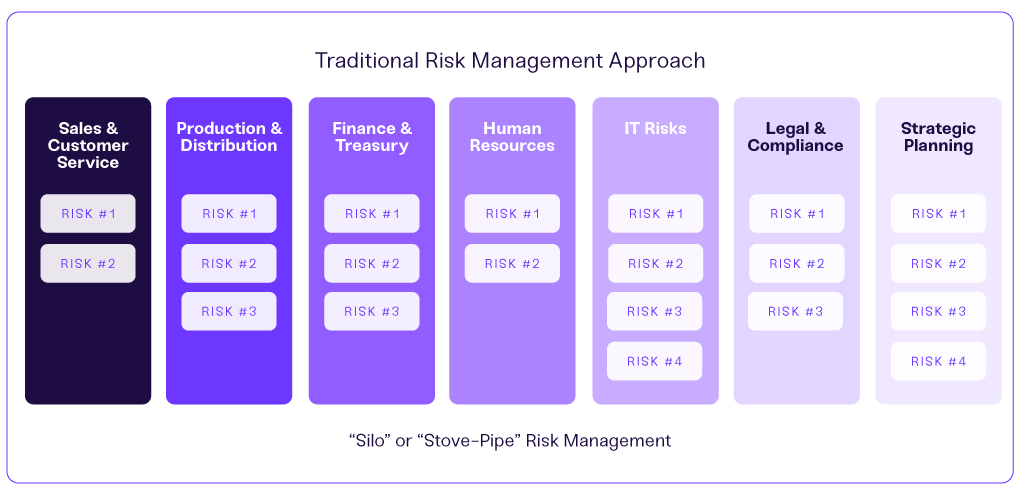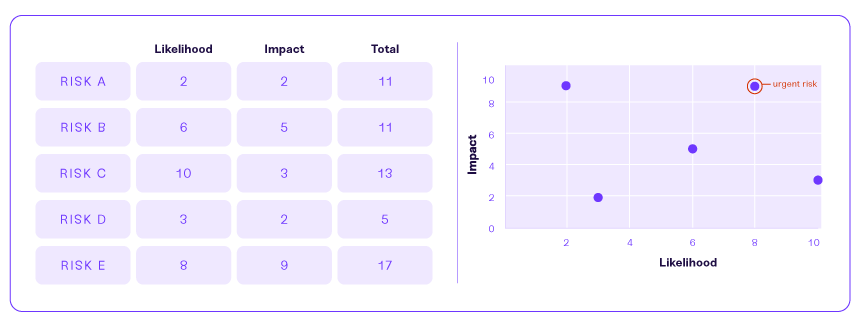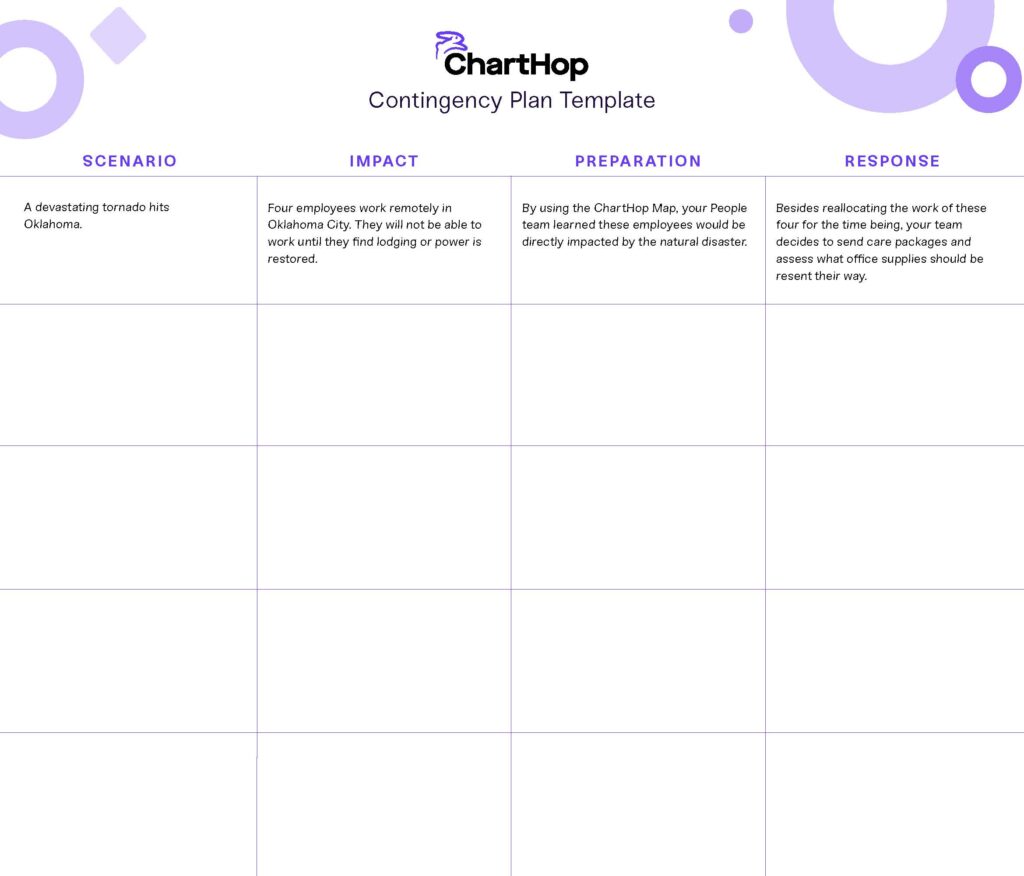When audiences think of Back to the Future, they remember Michael J. Fox’s performance. Yet, Fox – and his iconic “life preserver” vest– wasn’t the first choice for Marty McFly.
Universal Studios actually filmed another actor as the main character for several weeks. When that didn’t feel right they switched to Plan B: Fox. The rest is history.
Having a Plan B, otherwise known as a contingency plan, makes continuity possible. Whether it’s for a movie cast or a natural disaster, having a contingency plan in your back pocket allows for quick shifts and flexibility when potential setbacks or issues arise.
A Deeper Dive: What Is a Business Contingency Plan?
A business contingency plan, or Plan B, is a backup plan you can use if there’s a disruption in your company’s operations. Because of COVID-19, our minds tend to jump to worldwide disasters, but Joe Spector, Founder and CEO of Dutch, warns that more common risks are issues like “data breaches, loss of staff or customers, or declining business relationships.”
And it’s because these issues are so common that they are often overlooked as needing a contingency plan. But disruptions, transitions, and adaptability take time and money, and having a plan in place will help mitigate any potential upsets so your business can continue to run as smoothly as possible.
Shifting From the Traditional Risk Management Approach
To ensure your company is ready for the unexpected, your leadership must adopt a strategic contingency planning process. It makes sense to have backup plans, but did you know that only 12% of business leaders considered their companies prepared for 2020? Because pandemics, natural disasters, and data breaches aren’t predictable, it’s critical to have backup plans in case any major disruption occurs.
Leaders are in unique positions to challenge traditional approaches and implement tools and practices that take a modern look at risk assessment and risk management. Mark Shinkman, Vice President of Gartner’s Risk and Audit Division, attributes the absence of COVID-19 contingency plans to antiquated methods. He explains, “This lack of confidence shows that many organizations approach risk management in an outdated and ineffective manner.”
These outdated and ineffective practices involve department leaders assessing risks and creating contingency plans unique to their teams. However, this siloed approach fails to look at departmental risks that could impact the company as a whole. As a result, companies are ill-prepared to address crises that spread into other departments.

Traditional contingency planning favors department-level risk management, which can negatively impact the company.
Traditional Risk Management Implications
Most risks can impact your entire organization. If your departments work together, you can more easily understand these risks and develop a proactive plan. However, the traditional, siloed model will leave teams scrambling.
For example, unexpected turnover, furlough, and leave all affect staffing levels, which in turn influence a department’s ability to deliver on goals. If you don’t have a contingency or succession plan in place, other departments besides your People team may be affected.
This particular siloed planning process could result in:
- Disgruntled customers and lower renewal rates. Fewer personnel on the Customer Success teams translates to longer ticket times and phone queues, which could affect customer retention down the road.
- Extended timelines and frustrated customers. A shortage of software developers could significantly affect your ability to release features, fixes, and enhancements promised to customers and stakeholders. When promised fixes aren’t delivered, Customer Success representatives often take the brunt of customer complaints.
Looking at risks from a holistic view eliminates the traditional risk management tunnel vision. As a leader, you can make this happen. Encourage your departments to collaborate with others in the company so they can see the overlap in crises. With this high-level view, your departments will be better equipped to keep your company running in the event of a crisis.
4 Steps to Creating a Business Contingency Plan
To create a successful, aligned contingency plan, it’s important to analyze your potential risks, plan responses, and manage recovery efforts when crises occur.
1. Assess Potential Risks to Your Company
Contingency planning starts by acknowledging the risks that your company faces. After all, you can’t create a backup plan if you don’t know what you’re trying to overcome.
Invite department heads, team leads, and/or employees to anonymously participate in a risk assessment. Have respondents identify risks they believe are important and encourage participants to include both internal and external sources. Next, have them rate those risks on their likelihood and severity. Include a rating scale of one to 10, with one being low likelihood/low impact and 10 being high likelihood/high impact. It may be important to provide examples of each ranking to better calibrate results.
Once responses are in, gather leadership and additional department heads or team leads to review the responses and ratings. Use a risk assessment matrix or scatter plot to visualize the severity of each risk.

These visualizations can help your team identify urgent risks and determine an appropriate course of action.
Prioritize your results by reviewing the following:
- High impact and high likelihood: To ensure business continuity, your team should create a contingency plan immediately.
- High impact and low likelihood OR low impact and high likelihood: Contingency planning is useful but not urgent. Don’t prepare for these risks until you’re done planning for threats with high impact and high likelihood ratings.
- Low impact and low likelihood: Normal business operations are less likely to be impacted by these risks. While a contingency plan may not be necessary at this time, you should monitor these risks for potential impact and probability changes.
2. Consider Business Continuity Options and Their Implications
As you move forward with creating your contingency plan, consider how a particular course of action will target your crises and impact your workforce and company.
Acknowledging the trickle-down effect these risks—and your response to them—will have across your company, while being transparent in your collaboration practices, empowers your leaders to figure out how to respond on the department level. Furthermore, collaborating on crisis responses also provides your department leaders with an opportunity to voice concerns and share how each crisis would impact their teams.
Business Contingency Plan Template
For a business contingency plan example, let’s say that a few of your team members live in tornado country. It’s very possible that a natural disaster could affect them and their workflow, resulting in disrupted communication between team members and customers.
The customizable business plan template below can guide your team through problem solving your potential scenarios and responses.

Download your editable contingency plan template here.
3. Create and Practice Your Contingency Planning Guide
After collaborating with teammates and assessing potential risks, it’s now time to solidify your contingency plans.
As you compile your plans, make sure to include the steps your teams took to assess the risk, the various scenarios you drafted (even ones you may not have selected), and recommendations for how often leadership should review the plan.
You can go into as much detail as your team feels is necessary. Some companies might draw up a minimalist table view to make triggers and actions visible, while other companies may rely on thorough documentation to capture all aspects of their contingency plan.
How much detail you put into a guide will also depend on the factors in play. A data breach, for example, would involve specific team members and stakeholders with specific recovery strategies outlined. But a natural disaster that takes out the main office would involve a number of stakeholders and a broader plan to manage resources. Your approach will ultimately reflect the needs of your company and the complexity of the risk.
An additional (but equally important) component of your contingency planning guide is communicating it to and training your employees through mock simulations. Spector advises that your people should not only know their specific roles and responsibilities when the plan goes into effect, but also if and when adjustments are made “in accordance to changes in organizational processes and technologies.”
4. Revisit Your Contingency Plans
It’s important to revisit and refresh your contingency plans not only when processes and technologies change, like Spector mentioned, but also when positions are backfilled and roles and responsibilities shift.
You may also find that your team struggles to enact the plan. Shinkman warns that some people “tend to deal with emerging risks by just assuming they will go away and instead focus their attention on what is most important today.” But when those seemingly small problems aren’t addressed, they can quickly become larger, more serious issues down the road.
To successfully revisit your plans, cycle back through the above steps with your team to identify the best course of action. If you need to reassess a threat that wasn’t high risk before but has since become urgent, enlist your leadership team to talk through where the risk falls now. Then, proceed to create a new contingency plan or revise your existing one.
A Documented Contingency Plan = A Proactive Approach
Although you don’t want to be fear-driven, remember that disruptions can happen at any time. It’s therefore important to have a plan – any plan – in place.
You might opt for a stable enough plan that’s ready to go at a moment’s notice. You may choose to invest more time in making your contingency plan iron-clad. That’s the beauty of revisiting and refreshing your plans: risks and responses constantly change, and you have the ability to shift and further solidify your reactions.





